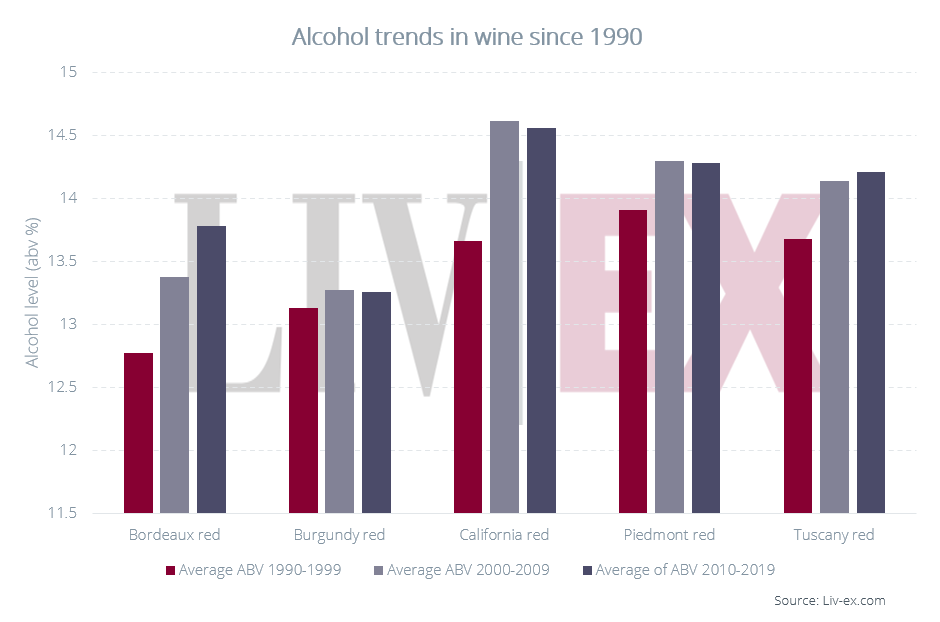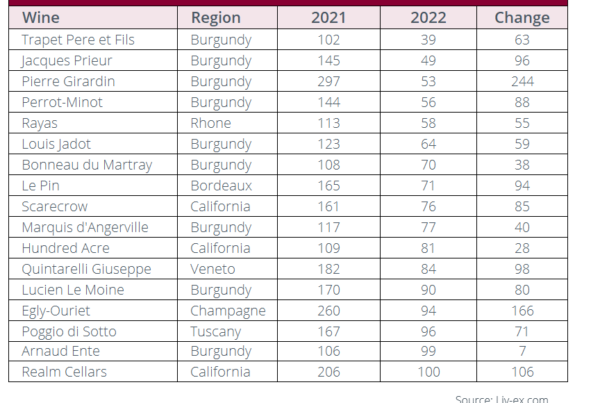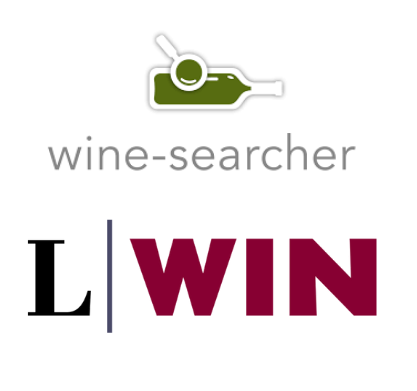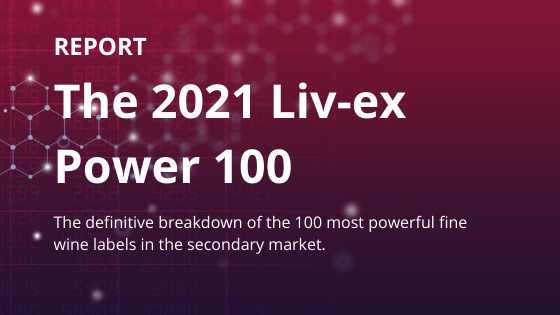Liv-ex ABV data shows rising alcohol levels over 30 years
Alcohol levels in wine have been rising over the past 30 years. This is no secret, but quantifying trends is only possible with a significant pool of accurate wine data – and Liv-ex now has the data.
As of 2020, Liv-ex began recording and verifying alcohol by volume (abv) values for wines. To date, it has recorded the alcohol levels of 35,000 wines, nearly 20,000 of which have been verified by the warehouse team, who have checked the bottles one by one.
They were doing it so as to be able to generate commodity (HS) codes automatically, making it easier for our members to ship wine around the world – especially in the context of Brexit. But as the values were entered, interesting patterns began to emerge.
“This is a remarkable snapshot of significant changes taking place in some of the world’s most important fine wine regions,” said Justin Gibbs, co-founder and director of Liv-ex.
As the chart shows, red wines from California, Piedmont and Tuscany saw a significant increase in alcohol levels from the 1990s to the 2000s, when they levelled off or began to pull back slightly.
The alcohol levels of Bordeaux wines, on the other hand, have continued to climb – albeit from the lowest base. Burgundy is the only of the five regions to show little movement.
Rising alcohol levels have been noted before, with much of the discussion focused on the impact of climate change. Put simply, rising temperatures lead to riper grapes with more sugar, and therefore more alcohol.
But this does not tell the whole story. To some extent, grape ripeness can be moderated by changing vineyard practices, such as canopy management or picking time. In the winery, different yeasts can be used to reign in alcohol levels. In some instances – as is likely to be the case for some Burgundian wineries – winemakers may simply cease to chapitalise (adding sugar before fermentation to increase the resulting alcohol level).
Style preferences, therefore, are also likely to have played a part in driving these trends.
There is also a degree of inaccuracy on the label. The EU allows a 0.5% margin of error. The USA allows a 1% margin of error for wines over 14% abv, while for wines with 14% abv or less, a leeway of 1.5% is allowed. A cynic might suggest that, for improved consumer perception, current levels are even higher than labels suggest.
“These wines analysed represent wines traded on Liv-ex, a broad range of mostly fine wines,” said Gibbs. “As the top end of the market typically sets the benchmark for the rest of the market, it is possible that this same pattern is being repeated across the value chain.”
This analysis is based on 13,120 abv data points that have been verified by the Liv-ex warehouse team when handling bottles.
About Liv-ex
Liv-ex is the global marketplace for the wine trade. Along with a comprehensive database of real-time transaction prices, Liv-ex offers the wine trade smarter ways to do business. Liv-ex offers access to £80m worth of wine and the ability to trade with 530+ other wine businesses worldwide. They also organise payment and delivery through their storage, transportation and support services. Wine businesses can find out how to price, buy and sell wine smarter at www.liv-ex.com.
Get ABV values
Liv-ex’s pool of abv values is available to members on our Gold package and above and can be accessed via API or through Wine Matcher, a route that requires no tech development. This article contains more information. Wine professionals are also welcome to contact our team for further information.




